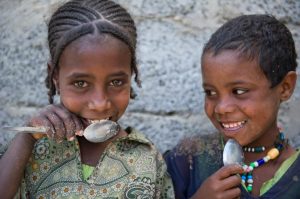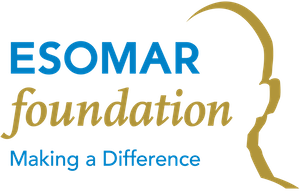
DataIn 2013, the World Food Programme was faced with a challenge when conflict broke out in the North Kivu region of the Democratic Republic of Congo. They needed updated food security indicator data, but could not collect it via traditional methods. This led them to develop a new way to collect food security data: through mobile survey company GeoPoll, which had the ability to send SMS messages directly to the phones of citizens in North Kivu.
Background
For years, governments and aid organizations have collected data to educate themselves about the needs and preferences of their beneficiaries; information on education, safety, and food security better informs stakeholders on these important matters. But in emerging markets such as those in Sub-Saharan Africa, it can be difficult to collect timely data, especially during a time of crises. Lack of reliable infrastructure combined with security risks can hinder data collection efforts, which means organizations like USAID and the World Food Programme (WFP) need to come up with new ways to access data.
Over the past decade, mobile phone penetration has grown in Sub-Saharan Africa: despite the lack of landline and internet infrastructure, mobile networks have grown. This increased connectivity has led humanitarian organizations to use the mobile phone as a way to communicate with beneficiaries and on-the-ground workers. Mobile connectivity has also opened up an opportunity for collecting data remotely from large populations in hard-to-reach areas, which is what led the WFP’s mVAM unit to work with mobile survey company GeoPoll to develop a methodology that could collect food security data remotely.
Methodology
The WFP had done previous work analyzing food security in North Kivu through face-to-face interviews 2011 and 2012, but in early 2013 conflict in the region dramatically altered the food security situation. WFP chose to partner with GeoPoll to send out mobile surveys because GeoPoll has a large database of mobile subscribers in the DRC, and is able to send messages that are free for respondents. The two organizations worked together to adapt two food security modules for the mobile phone, and sent surveys by SMS in July, August, and September of 2013.
Results showed that demographically, mobile surveys and face-to-face surveys were in line, with a distribution of 69.6% male and 30.4% female for mobile, and 65.2% male to 34.8% female in face-to-face surveys. Mobile results from the Food Consumption Score (FSC) module were consistent over all three months, with an average of 76.5% of respondents having an “acceptable” FCS score, and 8.1% having a “severe” score. However, while there may have been outside factors impacting data, mobile surveys had difficulty in accurately assessing the “borderline” category in between “acceptable” and “severe” scores. The Reduced Coping Strategies Index (rCSI) included only 5 questions, and for this index, results from mobile surveys were not significantly different from face-to-face results, indicating that the mobile surveys were able to accurately calculate rCSI scores.
The impact
These surveys were intended to determine if mobile surveys could be a reliable method for future projects. While there were some differences in the data, mobile surveys accurately demonstrated food security trends and identified the populations most vulnerable to severe food insecurity. There were also significant cost and time differences: costs were $5 per survey for mobile surveys, and $22 per survey for face-to-face. Mobile surveys took 2 weeks for collection of 1,000-2,000 responses, whereas face-to-face surveys took 6 weeks for 2,700 responses, and the mobile survey timeframe has been further reduced in subsequent projects.
Innovative solutions are often most needed in trying situations, but once a method has been tested it can be used over and over again. Since this project, GeoPoll and the WFP have utilized mobile surveys to gather data throughout Africa, including in West Africa during and after the Ebola outbreak. The possibilities that methods like this open up are endless, and this project demonstrates the usefulness of mobile as a tool in aid, government, and commercial research, either as a stand-alone method or combined with other types of data collection. When surveys need to span expansive regions or reach large numbers of respondnets, the ease of use, timeliness and cost-effectiveness of mobile surveys is difficult to beat. Even in smaller projects there is clear potential for mobile surveys: text messages or voice recordings allow for those who are not always home to answer questions whenever they want, and respondents can answer sensitive questions privately. The boom in mobile connectivity in the past years shows no sign of letting up, and this technology allows researchers to transcend traditional barriers of access to collect data more quickly from a larger group of respondents. Although it can be risky to experiment with unknown methods, innovation is desperately needed in many research fields, and as time goes on mobile surveys will continue to demonstrate their immense reach and power.
This research showing the added value of market research for our society was conducted by GeoPoll, a leading mobile surveying platform in Africa and Asia with a database of over 200 million users.
